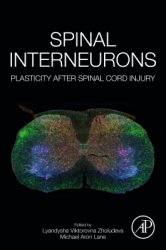Spinal Interneurons: Plasticity after Spinal Cord Injury
- Добавил: koticvvik
- Дата: 20-01-2023, 22:19
- Комментариев: 0

Название:Spinal Interneurons: Plasticity after Spinal Cord Injury
Автор: Zholudeva L.V., Lane M.A.
Издательство:Academic Press
Год: 2023
Формат:PDF
Страниц:434
Размер: 10,3 МБ
Язык: English
The spinal cord is comprised of four types of neurons: motor neurons, pre-ganglionic neurons, ascending projection neurons, and spinal interneurons. Interneurons are neurons that process information within local circuits, and have an incredible ability for neuroplasticity, whether due to persistent activity, neural injury, or in response to disease. Although, by definition, their axons are restricted to the same structure as the soma (in this case the spinal cord), spinal interneurons are capable of sprouting and rewiring entire neural circuits, and contribute to some restoration of disrupted neural communication after injury to the spinal cord (i.e., “bypassing” the lesion site).
Spinal Interneurons provides a focused overview of how scientists classify interneurons in general, the techniques used to identify subsets of interneurons, their roles in specific neural circuits, and the scientific evidence for their neuroplasticity. Understanding the capacity for neuroplasticity and identity of specific spinal interneurons that are optimal for recovery, may help determine cellular candidates for developing therapies.Spinal Interneurons provides neuroscientists, clinicians, and trainees a reference book exclusively concentrating on spinal interneurons, the techniques and experiments employed to identify and study these cells as part of normal and compromised neural circuits, and highlights the therapeutic potential of these cells by presenting the relevant pre-clinical and clinical work to date. People in industry will also benefit from this book, which compiles the latest in therapeutic strategies for targeting spinal interneurons, what considerations there are for the development and use of treatments, and how such treatments can not only be translated to the clinic, but how existing treatments should be appropriately reverse-translated to the bench.
Внимание
Уважаемый посетитель, Вы зашли на сайт как незарегистрированный пользователь.
Мы рекомендуем Вам зарегистрироваться либо войти на сайт под своим именем.
Уважаемый посетитель, Вы зашли на сайт как незарегистрированный пользователь.
Мы рекомендуем Вам зарегистрироваться либо войти на сайт под своим именем.
Информация
Посетители, находящиеся в группе Гости, не могут оставлять комментарии к данной публикации.
Посетители, находящиеся в группе Гости, не могут оставлять комментарии к данной публикации.
